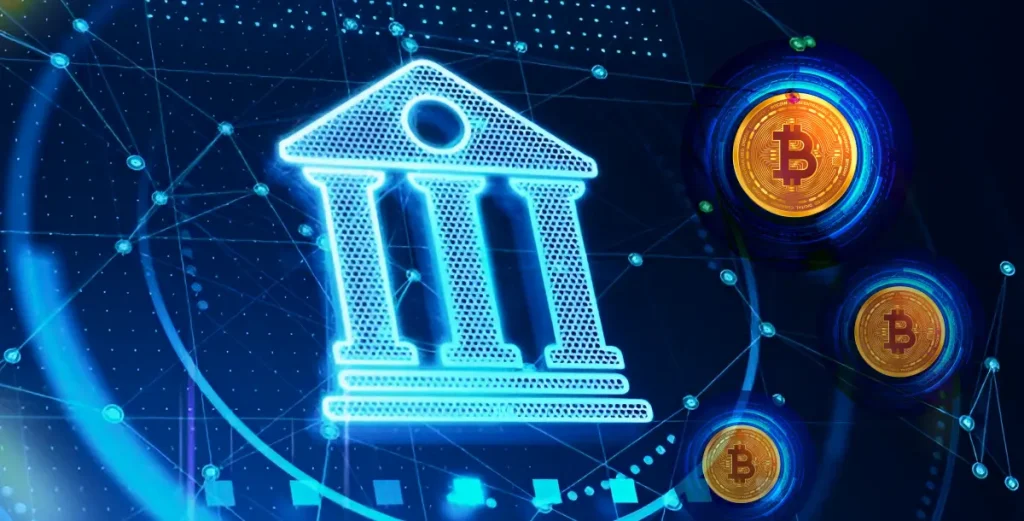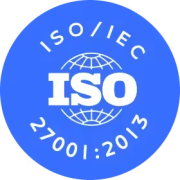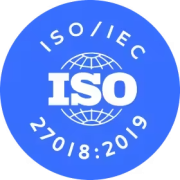Blockchain is ushering in a new era where physical and financial assets – from real estate and private equity to art, carbon credits, and invoices – can be digitized. Increasingly, companies are exploring tokenization: creating blockchain-based tokens that represent ownership of real-world assets.
Industry research projects that the global tokenized asset market could grow to on the order of $30.1 trillion by 2034. In practice, we’re already seeing asset managers and enterprises experiment with tokens for everything from high-end real estate to tokenized funds.
For instance, Franklin Templeton– a $1.4 trillion asset manager – launched one of the first regulated tokenized funds. In 2021 they issued a US-registered money market fund on the Stellar blockchain, and in 2025 they rolled out a Luxembourg-domiciled on-chain Undertakings for Collective Investment in Transferable Securities (UCITS) fund. This proves that incumbents see value in blockchain’s transparency and efficiency.
Meanwhile, shared industry efforts are pushing Distributed Ledger Technology (DLT) adoption for traditional assets. A 2024 SIFMA-led trial with Citi, JP Morgan, Wells Fargo and others demonstrated that tokenized Treasuries and bonds could settle over a unified DLT platform with reduced risk.
On the market side, the total value locked in tokenized real-world assets on public DeFi networks was already about $5 billion, and climbing. These figures – while still a fraction of conventional capital markets – show healthy growth and interest.
Strategic forecasts underscore the trend. A joint industry report estimates that by 2034, roughly $30 trillion of real-world assets could be tokenized globally, with trade finance alone making up a significant slice.
Deloitte projects $4 trillion of U.S. real estate assets on-chain by 2035 , up from just $0.3 trillion today. In short, large pools of equity, debt, and hard assets are eyed for tokenization.
These numbers illustrate growing enterprise demand – and the projects keep coming.
Beyond Franklin Templeton, banks like Societe Generale, Nomura and platform providers such as Figure and Ondo Finance have launched tokenized securities offerings. Carbon markets are also in focus: for example, State Street and others are exploring blockchain-based trading of carbon credits. Even ultra-traditional sectors like art sales and invoice financing are experimenting with tokens to reach new investors.
All of this signals that tokenization is more than hype – it’s a fundamental shift in how assets can be owned and transacted. For business leaders, the question is no longer if but how to participate.
The Promise of Tokenization: Liquidity, Access, and Speed
Tokenization turns real-world assets—like bonds, real estate, or private equity—into on-chain representations. This allows ownership, trading, and settlement to happen entirely on blockchain infrastructure. The benefits are proven: 24/7 settlement, broader investor reach, and reduced counterparty risk.
-
Liquidity: Illiquid assets like real estate or art become tradable on secondary markets.
-
Access: Fractional ownership lowers the investment barrier for retail and global capital.
-
Speed & Cost: On-chain smart contracts eliminate intermediaries and delays.
But as promising as tokenization is, real adoption depends on meeting institutional standards.
Why Custody Is the Enabler of Tokenization
For tokenized assets to move beyond proof-of-concept, they must be investable by regulated entities. That means custody is not optional—it’s mandatory.
-
Licensed custodians are required by law in many jurisdictions (Securities and Exchange Commission, Markets in Crypto-Assets Regulation, Monetary Authority of Singapore) to store tokenized assets.
-
Institutional capital cannot enter markets where the underlying asset isn’t secured by a qualified custodian.
Regulatory audits, asset segregation, and KYC/AML processes are only possible with enterprise-grade custody.
Market momentum backs this shift:
-
BlackRock, Franklin Templeton, and HSBC have all launched or piloted tokenized funds—each relying on integrated custody infrastructure.
-
A BCG report forecasts that tokenized assets could reach $16 trillion by 2030—but only if custody and compliance infrastructure scales with it.
-
BIS research confirms that central banks and regulators rank custody as the most critical pillar for digital asset infrastructure.
In short, custody is the foundation that turns tokenization from a tech demo into a regulated, scalable business. Without secure key management and regulatory-grade storage, tokenized assets can’t be trusted—or traded—at institutional scale.
Custody: Foundation for Security, Compliance, and Growth
Custody is more than key storage, it’s the operational backbone of secure, compliant, and scalable crypto systems. When embedded into payment gateways or tokenization platforms, custody unlocks real benefits while closing major risk vectors.
1. Security Protection vs. Hack Vulnerability
With Custody: Professional custodians use multi-signature wallets, HSMs, cold storage, and infrastructure to protect assets.
Without Custody: Hot wallets and poor key management become prime targets for attackers. Mt. Gox lost $450M; CoinsPaid lost $37.3M due to inadequate custody.
2. Compliance Readiness vs. Regulatory Risk
With Custody: Licensed custodians offer built-in KYC/KYB, AML monitoring, and audit logs. They meet standards under MiCA, MAS, or SEC rules.
Without Custody: Firms risk audit failure, fines, and platform shutdown. Many jurisdictions now require regulated custodians to handle tokenized assets.
3. Operational Efficiency vs. Fragmentation
With Custody: Funds settle instantly and securely. Merchants don’t manage wallets or keys. Custody simplifies reconciliation and conversion.
Without Custody: Manual fund transfers, wallet management, and conversion risks create friction and inefficiency.
4. Fraud Reduction vs. Loss of Funds
With Custody: On-chain payments are irreversible and monitored. Custodians detect anomalies early. Transparency boosts trust.
Without Custody: Lost keys or compromised credentials lead to permanent loss. No refunds. No recovery.
5. Tokenization Integrity vs. Smart Contract Risk
With Custody: Keys that control tokenized assets are secured in vault-grade infrastructure. This ensures asset backing remains valid and enforceable.
Without Custody: One smart contract exploit or mismanaged private key can drain entire pools, rendering tokens invalid.
6. Monetization Opportunities vs. Strategic Limitation
With Custody: Platforms can offer staking, lending, and custody fees. Custody enables new business lines and deeper merchant engagement.
Without Custody: Payment systems remain limited to transaction processing, unable to expand into broader digital asset services.
Strong Custody: What to Look For
Not all custody solutions are created equal. For asset tokenization, institutions typically demand institutional-grade features:
Multi-Signature and MPC Wallets
Look for solutions that require multiple approvals on every transaction (e.g. a 2-of-3 or 3-of-5 multi-sig scheme). This spreads control of the keys across people or devices, so no single breach can move funds. Modern custodians even use MPC (multi-party computation) to split keys into pieces. These cryptographic controls eliminate single points of failure and greatly reduce insider risk.
Compliance and Auditability
Enterprise custody should be audited and certified. For example, many qualified custodians hold SOC 2 audits, PCI certifications, and even banking licenses. They offer real-time audit logs and reporting, satisfying internal governance and regulator scrutiny. Choose a custodian with built-in AML/KYC systems and clear segregation of funds. Regulatory licensing is also key – for instance, U.S. SEC rules or EU MiCA require registered custody providers for many asset classes. Using a licensed, SOC2-compliant custodian ensures the platform can legally handle securities tokens and manage client assets.
Robust Key Management
Beyond multi-sig, custodian platforms typically enforce multi-factor authentication, hardware security modules (HSMs), and “cold storage” protocols. Cold wallets (offline machines) store the bulk of funds, while only a small hot wallet (online) handles day-to-day transfers. Access controls, biometric checks, and hardware key backups further reduce human error. In practice, businesses often “outsource” key custody to these specialists rather than DIY, since maintaining this infrastructure is complex and error-prone.
Secure, Scalable Asset Tokenization
Tokenization opens exciting opportunities, but it must be built on solid infrastructure. Custody is the bridge between the physical asset and its digital token. With the right custody partner, companies can mitigate risk and meet regulatory demands while unlocking tokenization’s full potential.
ChainUp offers integrated tokenization solution tailored to enterprise needs. In addition, our White Label MPC Wallet is SOC 2 audited and fully compliant with global regulations, providing multi-sig key management, hardware security modules, and 24/7 monitoring. We also integrate AML/KYC/transaction-screening tools so that every token transfer aligns with regulatory requirements. Combined with ChainUp’s token issuance and exchange services, business owners gain an end-to-end stack to digitize assets securely.
In a world where “whoever holds the key holds the asset,” entrusting custody to experts is non-negotiable. ChainUp’s enterprise clients benefit from institutional-grade infrastructure, disaster recovery, and real-time audit trails that lenders, auditors and regulators demand.







